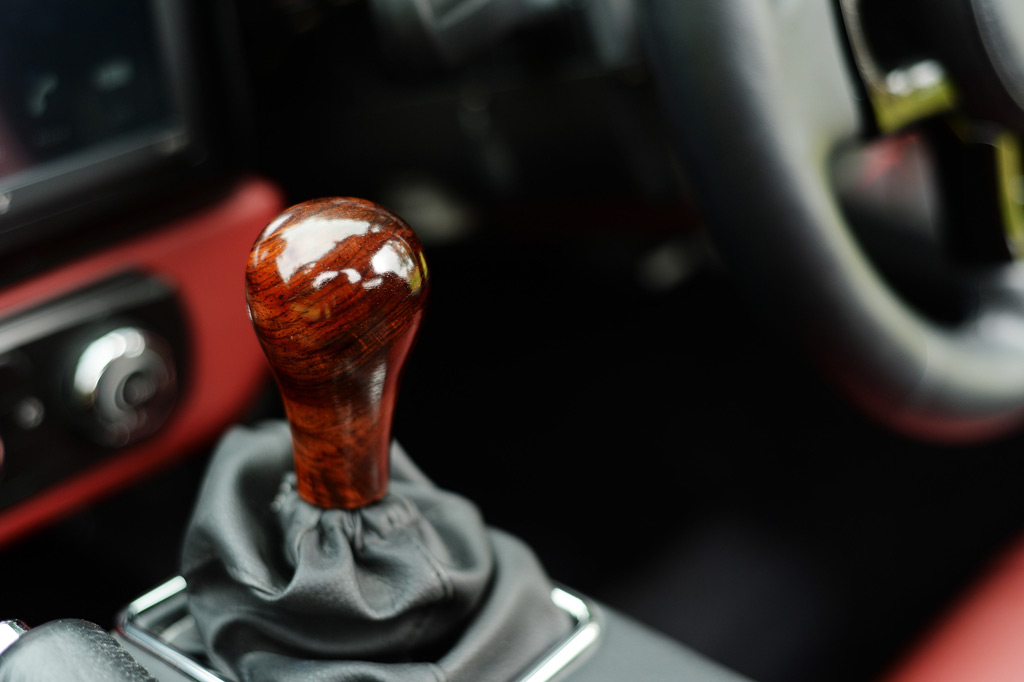Built to tear up the tracks of the UK’s competitive Hot Hatch and Mini Challenge championships, Charlie Collins’s stripped and caged MINI Cooper S R53 racer went from non-running wreck to raucous home-built racer.
First appeared in Performance MINI. Words & photos: Dan Sherwood
When it comes to racing, having a powerful engine is only part of the equation. To really see those lap times diminish, you need to take a leaf out of Colin Chapman’s book and ‘add lightness’. The legendary Lotus founder was obsessive about cars’ weight, and designed chassis that would make an anorexic jealous. This endowed his lithe machines with a power-to-weight ratio that gave them a distinct advantage. Not only were the cars faster in a straight line, their cornering and braking was also radically heightened and the silverware soon followed.
It was this very principle that led MINI-mad race fanatic Charlie Collins to take a slightly different route to track-taming nirvana when he swapped his previous R50 race car for a supercharged R53 equivalent.
“In the R50 I was struggling just to keep up with the lighter cars, let alone overtake them or challenge for the lead,” explains 22-year-old Charlie. “The MINI was a capable car but weighed considerably more than most of the other competitors (such as Honda Civic Type Rs and Renault Clios) that run in the 750 Motor Club’s Hot Hatch Championship. In the end, I’d squeezed about as much power as I could from the engine, but I just couldn’t make it 200kg lighter, so I decided it was time for a change.”

Being a true MINI nut, that change was never going to be to convert to the dark side and try a Type R on for size, but was instead to move up a class and contest the championship in an R53, where the regulations on power-to-weight ratios prove perfectly suited to a supercharged Cooper S.
Charlie says, “I knew it was the best way to remain behind the wheel of a MINI, yet finally be able to run at the front of the pack. It would also allow me to eventually move into the dedicated MINI CHALLENGE series.”
With many capable MINI specialists offering ready-built race cars, he could’ve easily bought a MINI Cooper S R53 that was fully race-ready off the shelf, but he liked the idea of building one himself.

“Not only would self-building provide less of a strain on my bank balance, it would also give me an excellent understanding of how it all worked together and a first-hand insight into race car-specific engineering,” reasons Charlie, who works as an engineer.
His quest to find a suitable S to transform into his new racing steed began in summer 2018. “As the car was always going to be completely stripped, with most of the parts replaced or renewed, I didn’t need a minter,” he chuckles. “This led me to looking at cars at the cheapest end of the market in a bid to save some cash. In the end I took a punt on a £275 eBay special.”

Having seen grainy mobile phone pictures of the car before picking it up, Charlie knew it was well past its best and the previous owner had already informed him it was a non-runner with a destroyed engine. But he was still shocked when he finally saw the condition of the car in the metal.
Charlie explains, “The timing belt had slipped, dropping a couple of valves and cracking the head. After that, the previous owner simply parked it up and left it.”
A flat battery and even flatter tyres were the most obvious issues, but they turned out to be just the tip of the iceberg, as further inspection revealed the neglect had allowed an extensive case of the red rot to take hold.

“Everything was either rusted beyond serviceable or pretty damn near to it,” remembers Charlie. “So in the end it’s been a pretty thorough rebuild with a lot of money spent on genuine MINI bolts and parts because you simply can’t get them anywhere else. So much for saving cash, eh?”
The bodywork was pretty beaten up too, but luckily there were plenty of cheap replacement items readily available through various breakers and parts websites.
“Even though I was keen for the car to look good, it wasn’t worth putting pristine new body panels on, so as long as they were straight and not cracked or corroded, they would be fine – this is a race car, after all. As the saying goes, rubbin’s racing,” he laughs.
The build began with the car being stripped to a rolling chassis, while the blown engine was removed and binned in favour of a low-mileage, working, donor engine.

“When it came to selecting the various tuning parts for the car, I was massively inspired by the Tom and Scott at 1320 Mini,” Charlie reveals. “I was also lucky to have them on the end of the phone to give me loads of advice on what works and what doesn’t and, crucially, where I can gain power without making the engine any more fragile than it already is, as I simply don’t have the time or budget to keep rebuilding blown engines after every race meeting.”
To ensure the motor was meaty enough to be competitive, yet strong enough to take the regular abuse lap after lap, Charlie equipped the 1.6-litre W11B16 with a modified airbox with a drop-in K&N 3190 filter, an Airtec top-mount intercooler and a Janspeed manifold mated to an R56 Scorpion cat-back stainless steel exhaust.
A facelift Teflon supercharger with 15 per cent Kavs pulley was selected to supply the increased level of boost, while Bosch 550cc injectors add the requisite amount of high-octane super unleaded.

Charlie grins, “I recently added a Cat Cams 1302469 cam to the standard head and had the ECU remapped with a Bytetronik tune by 1320 MINI. The power delivery is simply savage now and the car is so much more responsive. I can’t wait to try it on track.”
But extra power is useless unless your transmission can cope, so Charlie took the opportunity to beef up the MINI’s driveline with a Clutchmasters FX400 uprated clutch and lightweight flywheel, as well as install a Quaife limited-slip differential, which is an essential modification for any car being used hard on track, as it greatly increases the amount of traction when exiting corners.
While he was at it, Charlie also swapped the heavy lead acid battery for an Odyssey lightweight racing item and relocated it in the spare wheel well. This has altered the car’s weight distribution by shifting some mass away from the front and towards the stripped-out rear, improving the MINI’s already-majestic handling.

“With the car finally running, I shifted my attention towards improving the suspension and braking,” recalls Charlie. “I started off by changing the rear trailing arms for lighter R56 alternatives, refurbishing the front and rear subframes and replacing all the bushes with Powerflex polyurethane items.”
A full set of more powerful R56 John Cooper Works Brembo brakes were then purchased, refurbished and installed along with Hel braided brake lines, while the stock suspension made way for a quartet of KW Clubsport coilovers, a Whiteline rear anti-roll bar and Hardrace adjustable control arms.
He winces, “The KWs were easily the most expensive single item I’ve shelled out for on this car. In fact, when combined with the cost of the brakes, these two items alone have cost me over £1500 per corner. But the way the car handles now is incredible, so I’m not complaining – they’re worth every penny.”

Allowing Charlie to make the most of his marvellous MINI’s super suspension is a set of 7x17in Team Dynamics Pro Race 1.2 wheels wrapped in sticky 205/40×17 Toyo Proxes R888R semi-slick tyres.
Adding more lightness, Charlie removed the factory sound-deadening before diligently paring back the wiring loom to lose any redundant wiring, such as for the electric windows and headlights. The latter is not only a cunning way to lose a few extra kilos, but also makes tracing electrical faults far easier, especially when you are in the time- and resource-sparse confines of a pit lane.
“With the wiring complete, I had the whole interior resprayed to neaten it up before a JP Cages bolt-in roll cage was fitted,” says Charlie. Joining the race-spec cage is a single OMP RS bucket seat with a six-point harness, an Alcantara-trimmed steering wheel and a fire suppression system plumbed-in to the cockpit and engine bay.
The final piece of the puzzle was to focus on the exterior, in terms of additional weight savings and to give it a look that would stand out in the paddock and on track.
“I’d already replaced the heavy headlights with lightweight ETS blanks, so continued the theme with the fog lights, utilising the apertures to fit ETS racing brake ducts. This shed a surprising amount of weight from the front, but was nothing compared to the reduction that came from swapping the glass side and rear windows to Lexan.”

Being a race car, there was no point in going for a fancy paint job, so Charlie engaged WrapIT to apply the livery, the bright teal accent contrasting well against the dark gunmetal grey body and gloss black wheels, and is even complemented by the Luke tow straps in a matching hue.
“I’m really pleased with how the car has turned out,” beams Charlie. “But as yet, I’ve not had the chance to take it to the track for any testing, so I’m just hoping everything works come race day.” It’s going to be a real trial by fire when he hits the grid in anger.
“It will be a steep learning curve to get the setup dialled in to perfection, but that’s part of the fun of racing,’ shrugs Charlie. “Hopefully, we’ll finally give those Type Rs a run for their money!”
And judging by the quality of his car and his skills behind the wheel, we’re sure Charlie and his MINI will do just that.
Tech Spec: MINI Cooper S R53 racer
Engine:
1.6-litre four-cylinder 16v W11B16 engine, standard head with Cat Cams 1302469 cam, Bosch 550cc injectors, Bytetronik ECU remap, Airtec top-mount intercooler, 15 per cent Kavs pulley, Janspeed manifold mated to standard cat and R56 Scorpion cat back exhaust system, modified standard airbox with K&N 3190 filter, facelift Teflon supercharger, Pro hoses, Fletcher radiator, standard water pump, Odyssey race battery and ETA battery isolator
Power:
“The car is tuned to keep me within the class regulations for my current race series of 200bhp per ton at the flywheel. Car produces 197bhp at the wheels with 166lb.ft of wheel torque on the dyno”
Transmission:
Clutch Masters FX400 clutch and FX400 flywheel, Quaife limited-slip differential, facelift gearbox running standard ratios, polybushed gearbox mounts
Suspension:
Fully refurbished and powder-coated front and rear subframes, Powerflex bushes, KW Clubsport coilovers, Whiteline rear anti-roll bar, Hardrace adjustable control arms, R56 trailing arms, SuperPro adjustable drop-links, replacement wheel bearings, power steering delete
Brakes:
Front: Brembo 316mm drilled and vented discs with R56 JCW Brembo four-pot callipers and Carbotech pads, ETS Racing brake cooling ducts; rear: Nitrac drilled and vented discs with JCW R56 callipers and Carbotech pads; HEL braided lines
Wheels & Tyres:
7x17in Team Dynamics Pro Race 1.2 alloy wheels fitted with 205/40×17 Toyo Proxes R888R tyres
Interior:
Fully stripped interior with all sound-deadening removed, JP Cages bolt-in roll cage, OMP RS bucket seat, Lifeline plumbed-in mechanical fire extinguisher, OMP steering wheel, OMP six-point harness, Ultra gauge, lightweight door cards
Exterior:
Standard three-door MINI retained as per regulations, front lights removed and ETS Racing headlight blanks fitted, front fog lights removed and fitted with ETS Racing brake ducts, Lexan windows fitted to doors, rear quarters and boot, drilled and modified front bumper and crash bar, battery box delete to allow R56 cat-back exhaust to be fitted, WrapiT vinyl wrap












